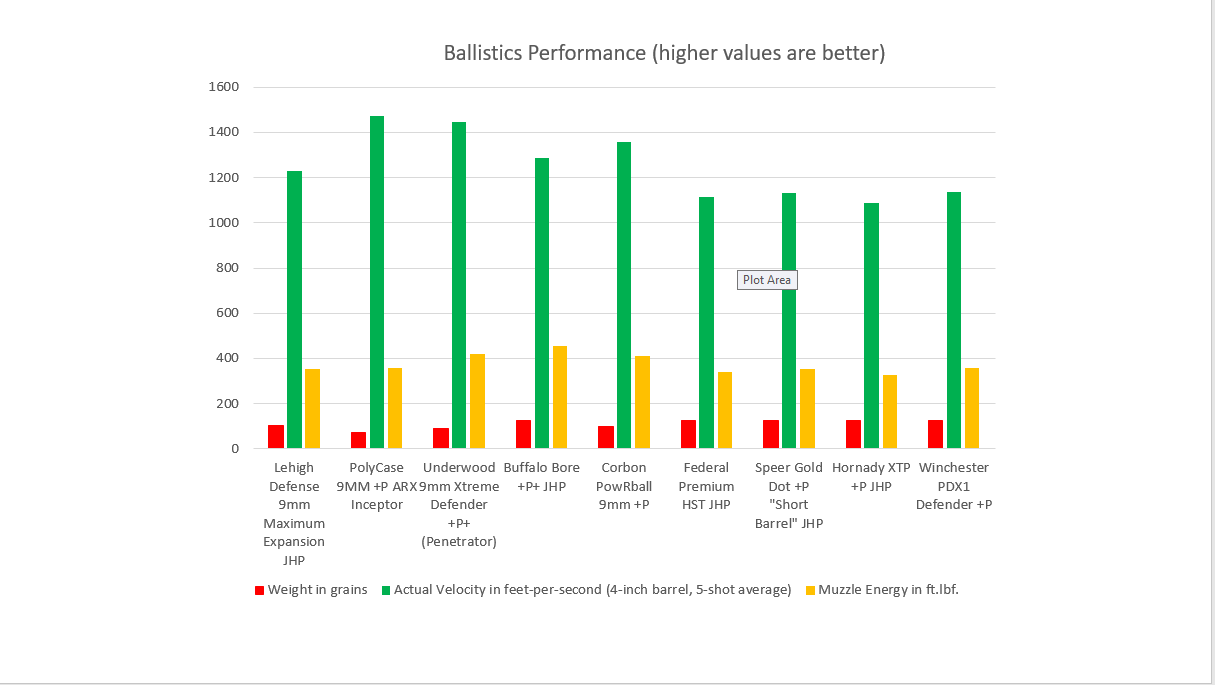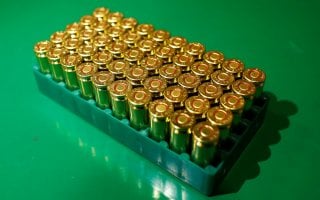Concerned About Defending Your Home? Check Out These Great Ammo Options
Each is worth a look.
Here's What You Need to Know: Always remember that in gunfights, shot placement is king.
I’ve been a handgun enthusiast for a little over a decade now, and I love everything about handguns. I love older pistol designs and all modern designs the same way.
I have my preferences as far as handguns designs, i.e. I like hammer-fired handguns better than striker-fired ones, I like handguns with an all-steel frame better than those with a polymer or an alloy frame, and I like 1911s and SA/DA magnum revolvers far more than I’d ever like any other handgun platform.
Likewise for handgun calibers, not counting rounds I consider obscure but slowly gaining popularity (e.g. 10mm, .460 Rowland), I have a soft spot for both the .45 acp and the .357 magnum — which shouldn’t come as a surprise to anyone because like I said, I love 1911s and magnum revolvers. For me, as far as handgun calibers, these two being on the higher end of the ballistics performance spectrum, no other calibers come close.
The .45 acp might be the slowest and heaviest of the “big three” semi-auto handgun calibers, but it makes the biggest holes in soft tissue targets when comparing FMJ vs. FMJ or JHP vs. JHP — its only downsides: terrible solid target penetration (slow and fat bullets have a hard time penetrating even entry-level body armors) and lackluster ammo capacity in handguns chambered for it (the typical 1911 magazine can only fit seven to eight of these big fat cartridges).
The .357 magnum, on the other hand, is the complete opposite of the .45 acp. A lighter bullet with a smaller cross-sectional circumference propelled to velocities a couple of hundred feet per second faster than the speed of sound, this handgun caliber is unrivaled when it comes to penetration, so much so that it will over-penetrate soft tissue targets — but that can easily be mitigated by using soft jacketed hollow point (SJHP) or jacketed soft point (JSP) bullets.
Its only downside: lackluster ammo capacity. Typical small frame revolvers can only hold five rounds, medium frame revolvers can only hold six to seven, and large frame revolvers can only hold up to eight. Not saying that wheelguns are worse than semi-autos, if anything I feel safer knowing that I can store and access mine in a pinch, like in my car or nightstand.
So as much as I hate to say it, my two favorite handgun calibers have the same Achilles’ heel: the handguns they’re chambered for can’t carry as many rounds as I’d like.
WHY THE 9×19 PARABELLUM IS A GREAT OPTION
Just because I said I prefer the two handgun calibers I mentioned above doesn’t mean I think the 9mm is no good. In fact, I like it a lot (just not nearly as much as I like the other two). I don’t buy into the whole .45 acp vs. 9mm debate, because I don’t see the point. Why do I have to choose one over the other when I can have both?
The 9mm will not create as big a hole as the .45 acp does, and it will never outrun a speeding .357 magnum bullet fired from a 4-inch-barrel revolver, so as far as ballistics, it will never come close to my two preferred handgun calibers. But it offers one thing neither of my preferred calibers offer: superb ammo capacity.
Case in point, a full-size Glock 17 can hold 17 rounds of 9mm in the mag, while a Glock 21 (which is about the same size as a Glock 17) can only hold 13 rounds of .45 acp.
I wouldn’t bother comparing ammo capacities between shooting platforms for the .357 magnum and the 9mm, as I see no point in comparing revolvers to semi-autos.
But if pushed to it, comparing single stack semi-autos, a single stack 1911 in 9mm can hold up to ten rounds, while both the long-defunct LAR Grizzly and the recently-revived Coonan 1911-style pistols chambered for the .357 magnum can only hold seven rounds.
And don’t even get me started on modern 9mm handgun designs with wider frames that allow for double-stack magazines. I can go on all day.
So the 9mm trumps both my preferred handgun calibers in the ammo capacity department. What about its downsides?
Well, there are 9mm ammo extreme pressures loads (i.e. those with the +P+ designation) which, while a full 100 fps slower compared to entry level .357 magnum velocities, are up the same super sonic alley, making it vastly superior to the .45 acp whenever there’s need for more penetration.
And with modern bullet designs such as expanding full metal jackets (EFMJs), jacketed hollow points (JHPs), etc., the lighter and faster 9mm can rival the slower and heavier .45 acp in the terms of wounding capabilities.
With all the 9mm ammo choices on the market though, we’re presented with another problem.
WHICH AMMO DO WE PICK FOR SELF DEFENSE?
The perfect self defense load for handguns, regardless of the caliber, must provide penetration depths of 12 inches minimum and 18 inches maximum. At least these are the numbers the FBI go by.
Fortunately for us, since the FBI already did the research, we can use this metric to help us determine which ammo to pick. But we’ll add a few more metrics of our own: muzzle energy, wounding capability (the bigger the permanent and temporary wound cavities, the better) and pricing.
So to narrow down the ever-growing list of 9mm ammo options for self defense, we’ll be comparing offerings from different manufacturers based on the bullets’ ability to penetrate only within 12 to 18 inches (those that penetrate less than 12 or over 18 inches will have to be weeded out), how they perform in ballistics gel tests, and how much each costs.
THE CONTENDERS
We’ve gathered info on some of the most popular 9mm self-defense loads available online. Note: These are some of the most powerful 9mm loads on the market. Contact your handgun manufacturer to make sure your piece can handle +P loads before you even consider buying any of these:
-
Lehigh Defense 9mm Maximum Expansion JHP
-
PolyCase 9MM +P ARX Inceptor
-
Underwood 9mm Xtreme Defender +P+
-
Buffalo Bore +P+ JHP
-
Corbon PowRball 9mm +P
-
Federal Premium HST JHP
-
Speer Gold Dot +P “Short Barrel” JHP
-
Hornady XTP +P JHP
-
Winchester PDX1 Defender +P

Info were gathered from several YouTube videos uploaded by tnoutdoors9, ShootingTheBull410 and ScubaOz, ammunition manufacturer websites, third party websites such as LuckyGunner and online gun forums. The research took a few days to make sure we only provide the most accurate data possible.
To help our readers make sense of the table above, we’ve created a few graphs.
BALLISTICS ANALYSIS
The chart below specifies each brand’s ballistic performance factoring in bullet weight and velocity:

BULLET WEIGHT
The red bars on the bar graph above represent each bullet’s weight in grains.
A heavier bullet penetrates barriers better, and when it hits a bone in the body, causes the bone to fracture and splinter. The bone fragments shooting in all directions in turn result in more tissue damage.
But the problem with heavier bullets (in 9mm cartridges at least) is they can be harder to push with the limited room the cartridge provides for powder — in simpler terms, a heavier bullet will move slower compared to a lighter bullet. This is why the heaviest 9mm bullets only weigh 147 grains. In addition, heavier bullets tend to have more felt recoil.
Five of the contenders, Federal Premium HST JHP, Speer Gold Dot +P “Short Barrel” JHP, Hornady XTP +P JHP, Winchester PDX1 Defender +P and Buffalo Bore +P+ JHP all weigh 124 grains. While these will have no problem breaking bones, these bullets will be significantly slower compared to the lighter and faster options like the PolyCase ARX Inceptor +P and the Underwood 9mm Xtreme Defender +P+.
ACTUAL VELOCITY VS. ADVERTISED VELOCITY
The green bars on the bar graph above represent each bullet’s velocity in feet per second. These are actual velocity figures when bullets are fired from a 4-inch barrel — not the velocity figures printed on the box of each of the brands.
A higher velocity equates to more energy which results to better ballistic performance. But like weight, a higher velocity also has the same downside: more felt recoil.
The fastest of all the bullets we gathered info on is PolyCase ARX Inceptor +P, which is understandably so, because it is also the lightest. Underwood 9mm Xtreme Defender +P+ is the second fastest, while Corbon PowRbal +P is the third.
MUZZLE ENERGY
The yellow bars on the bar graph above represent each bullet’s energy in foot-pounds of force (ft.lbf) at the muzzle. Since we’re using actual velocity figures when bullets are fired from a 4-inch barrel, these are also the actual energy figures, not to be confused with those printed on bullet packaging.
It’s a no-brainer that a higher muzzle energy equates to better performance. The consensus among firearms enthusiast is, when a high energy FMJ bullet hits a soft target, the energy is just wasted because the bullet won’t stop until it travels too far or it hits another target. But with designs such as modern day hollow points and fluted bullets, the energy is not wasted as the bullet can utilize it to cause more tissue destruction.

